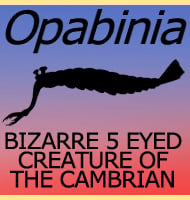In Depth
For over a hundred years Gigantophis was regarded as the largest known snake, a title that has since been handed to the even larger Titanoboa in 2009. Still even at the lower estimate of just over nine meters long Gigantophis is still bigger than the reticulated python which is thought to be the largest known snake today at almost seven meters.
Like with other huge prehistoric snakes Gigantophis was a constrictor that squeezed the life out of its prey rather than using venom. Gigantophis could have used its size to tackle almost any moderately sized prey, although it has been suggested that Gigantophis preyed upon small proboscideans, mammals that would grow large into today’s elephants.
In 2014 remains of Gigantophis were described from Pakistan by Rage et al. These remains seem to be slightly different to the known type species G. garstini, yet still much closer to it than other known madtsoid snakes. At the time of writing these have been referred to as Gigantophis sp. The now broad distribution of Gigantophis remains in North Africa and South Asia suggests that Gigantophis had a much wider distribution than previous though, perhaps encompassing other areas of Afirca, the Middle East and possibly even further into Asia. This also suggests an earlier radiation of the genus, beginning earlier in the Eocene, and perhaps even into the Paleocene, though at the time of writing all known Gigantophis fossils are mid to late Eocene in age.
Gigantophis is a member of the Madtsoiidae a group which includes other prominent prehistoric snakes as Madtsoia and Wonambi.
Further Reading
– Noveaux restes d’un serpent Boid� (Madtsoia madagascariensis nov. sp.) dans le Cr�tac� Sup�rieur de Madagascar. Bulletin du Mus�um national d’Historie naturelle, S�rie 2, Paris (33)152-160. – R. Hoffstetter – 1961. – First report of the giant snake Gigantophis (Madtsoiidae) from the Paleocene of Pakistan: paleobiogeographic implications. – Jean-Claude Rage, Gregoire Metais, Annachiara Bartolini, Imdad A. Brohl, Rafiq A. Lashari, Laurent Marivaux – 2014. – The osteology of the giant snake Gigantophis garstini from the upper Eocene of North Africa and its bearing on the phylogenetic relationships and biogeography of Madtsoiidae. – Journal of Vertebrate Paleontology. 37 (4): e1347179. – J. P. Rio & P. D. Mannion – 2017.










